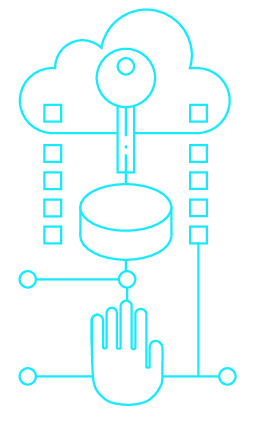|
|
|
| Module code: PIM-DE |
|
|
3V+1U (4 hours per week) |
|
6 |
| Semester: 2 |
| Mandatory course: yes |
Language of instruction:
German |
Assessment:
Written exam, Duration 120 min.
[updated 13.10.2024]
|
DFI-DE (P610-0286) Computer Science, Master, ASPO 01.10.2018
, semester 2, mandatory course
KIM-DE (P222-0050) Computer Science and Communication Systems, Master, ASPO 01.10.2017
, semester 2, mandatory course
PIM-DE (P222-0050) Applied Informatics, Master, ASPO 01.10.2017
, semester 2, mandatory course
PIM-DE (P222-0050) Applied Informatics, Master, SO 01.10.2026
, semester 2, mandatory course
|
60 class hours (= 45 clock hours) over a 15-week period.
The total student study time is 180 hours (equivalent to 6 ECTS credits).
There are therefore 135 hours available for class preparation and follow-up work and exam preparation.
|
Recommended prerequisites (modules):
None.
|
Recommended as prerequisite for:
|
Module coordinator:
Prof. Dr. Klaus Berberich |
Lecturer:
Prof. Dr. Klaus Berberich
[updated 27.10.2016]
|
Learning outcomes:
After successfully completing this module, students will be capable of handling large amounts of structured and unstructured data. They will know the basic structures of a (relational) database system and be familiar with implementation techniques (e. g. index structures and blocking mechanisms), as well as their benefits (e. g. query acceleration and transaction isolation). Students will be able to differentiate between transaction-oriented (OLTP) and analytical (OLAP) application scenarios. They will know the basic terms of so-called data warehouses and can express analytical information requirements in a suitable query language (e. g. SQL and MDX). Students will be familiar with basic information retrieval models (e. g. vector space model) and can apply them to sample data, in order to master unstructured data (e. g. text documents). They will be familiar with quality criteria (e. g. precision and yield) and can calculate them for the determined results. Students will be familiar with data mining methods, such as the analysis of shopping carts, as a means of gaining knowledge from data. Students will be capable of systematically determining the parameters of such procedures and critically assessing the results. Students will be familiar with the platforms available for distributed data processing, (e. g. MapReduce and Spark). They will be able to select a suitable platform for a given analytical task and implement the task using this platform.
[updated 24.02.2018]
|
Module content:
1. Introduction
2. Database systems
2.1 Architecture
2.2 Buffer management
2.3 Access structures
2.4 Query processing
2.5 Transaction management
3. Data warehouses
3.1 Modeling
3.2 Data integration
3.3 Query languages
3.4 Implementation aspects
4. Information retrieval
4.1 Retrieval models
4.2 Quality criteria and evaluation
4.3 Implementation aspects
5. Data mining
5.1 Classification
5.2 Clustering
5.3 Association rule learning
6. Big data
6.1 Platforms (e.g. MapReduce and Spark)
6.2 Interfaces (e.g. Pig and Hive)
6.3 Implementation of selected procedures (e.g. k-Means and PageRank)
[updated 13.10.2024]
|
Teaching methods/Media:
Transparencies, practical and theoretical exercises
[updated 20.12.2017]
|
Recommended or required reading:
Kemper Alfons und Eickler André: Datenbanksysteme - Eine Einführung, De Gruyter, 2015
Saake Gunter und Sattler Kai-Uwe: Databases: Implementierungstechniken, mitp Professional, 2011
Martin Kleppmann: Designing Data-Intensive Applications, O’Reilly, 2017
Garcia-Molina Hector, Widom Jennifer, Ulmman Jeffrey D.: Database Systems: The Complete Book, Pearson Education, 2013
Leskovec Jure, Rajaraman Anand und Ullman Jeffrey D.: Mining of Massive Datasets, Cambridge University Press, 2014
[updated 13.10.2024]
|
Module offered in:
SS 2025,
SS 2024,
SS 2023,
SS 2022,
SS 2021,
...
|


